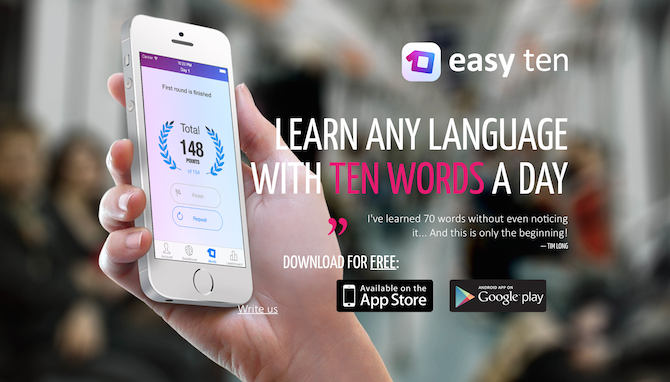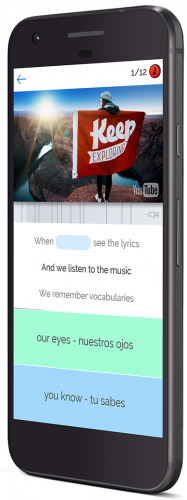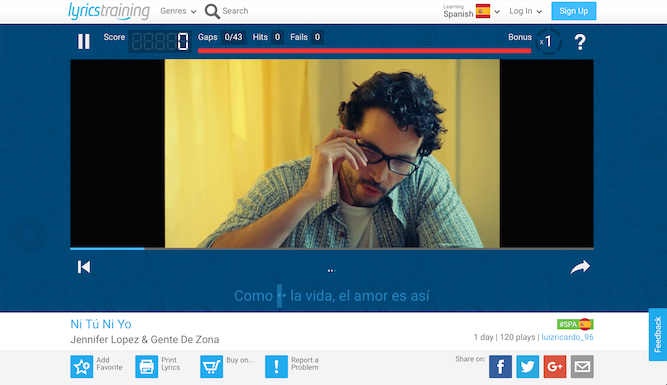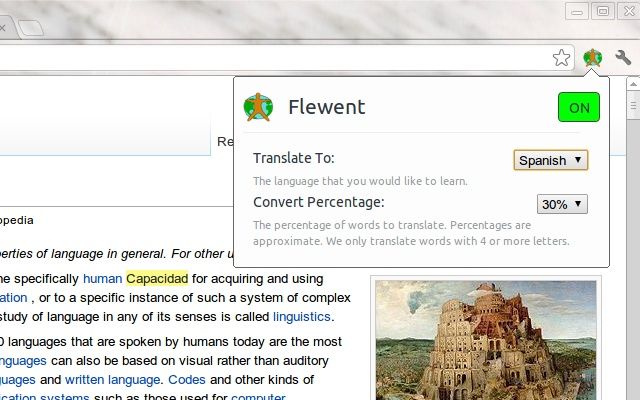Maybe you want to move to a different country. Take on an international job. Or just want to broaden your horizons. In any case, being able to communicate in more than one language can be beneficial in more than one way.
That's not news for anyone anymore. In fact, learning a new language is maybe already on your bucket list. You just got stopped in your tracks by the red brick wall called busyness.
What if we told you that it doesn't have to be like that?
For those willing to immerse themselves in language studies, but also suffering from time shortage -- we're here to save your day! Or, to be more precise, we're here to show you how to become your own superhero and save the day.
Read on and find out how to learn a language without having to spend more than 5-10 minutes a day.
Microlearning for Macro Results
Microlearning is a way of consuming new information in short, specific bursts through a variety of mediums. It's about small quantities of information that leave a lasting impression.
Why is it perfect for learning a new language? Two reasons.
Time. Microlearning doesn't require you to spend hours every day trying to fit as much new information as you can in your brain. Using this "bite-sized" technique you can make sure you absorb any new learning efficiently and are able to recall it for future use.
Motivation. It will make the learning process more rewarding. You will start seeing results straight away and will be able to apply your knowledge to daily life.
Microlearning helps you digest new information easier and faster, all while being in full control of what and when you learn.
1. Install a Vocabulary App
So, you want to learn a language in 5-10 minutes a day. The question now is, where do you begin? Well, there's a popular app for that.
Duolingo
One of the most crowd-pleasing language apps to apply the microlearning technique is Duolingo. It has a nice set of 21 languages and is freemium. It's available on Windows, iOS, and Android devices. A study from a few years ago found that it takes 34 hours of Duolingo lessons to learn the equivalent of one college semester.
How is the app so efficient? Duolingo lessons are gamified, which makes the process of learning more interesting and engaging as your play your way into the new language.
The app focuses on direct translation of words and phrases. That way, you will almost always be translating from one language to your native language, or vice versa, which makes learning quicker and simpler.
Download: Duolingo for iOS | Android
Easy Ten
One of the more recent examples of effective language learning apps is Easy Ten. It's a vocabulary app that will give you ten new words to learn every day. You can set the themes and topics that you're interested in, as well as increase the number of vocabulary units you'd like to learn per day.
Once that's set, you'll start receiving fresh words every day with audio pronunciation, translation, definition, and examples of use. Once you got the vocabulary memorized you can do quizzes to test your knowledge. The app is free and is available for download on both Android and iOS.
Download: Easy Ten for iOS | Android
2. Watch Videos in a Foreign Language
While learning a language by using a vocabulary app will bring you quick results, it's not going to be immersive enough to give you necessary conversational skills. If that's something you're after, you're going to have to try something different, like watching YouTube videos in a new language.
You already spend time listening to music, watching movies, and TV. A part of that must be on YouTube, too. Why not bring more diversity into it and do it in the new language? It will help you train the ear to the nuances of a new language. Integrate self-education into your entertainment habits and learning will feel like a hobby, not a burden.
Try the entertaining Easy Languages YouTube channel for street speak, or other language-specific channels spread throughout YouTube.
3. Learn a Language With Music
Another way to make sure learning a language doesn't feel like too much effort is by using lyrics- and music-based vocabulary apps and websites.
Linguician
Learning a language simply by listening to music sounds too good to be true, but it is a fun package.
Linguician is a site that lets you choose your songs based on your favorite music genres and artists, learn new vocabulary while listening to them, and then test your newfound knowledge with the various multiple-choice tests.
Lyrics Training
Lyrics Training is a similar platform that helps you broaden your vocabulary while enjoying your favorite music pieces. The main (and the only) task you get is to fill in the gaps in the lyrics as you listen to a song. You can do it in different modes and go from a Beginner level with filling in 10 percent of the lyrics to an Expert listener.
4. Save Your Time With Wait-Learning
How often do you find yourself wasting time while waiting for a friend's reply on Facebook or Twitter? Imagine if you could make use of that time and spend it learning a language instead.
Waitchatter
Waitchatter is a free and effortless way to fill in that time that you spend waiting for a reply. This Chrome extension provides you with interactive vocabulary exercises while you're waiting for your conversation partner to respond. Instead of pointlessly staring at the computer screen now you get to learn new words and freshen up things you've already learned.
5. Use the Right Learning Plugins
If you're so busy, you'd rather not leave the page you're looking at, but completely integrate language learning into your online activity instead, look no further. All you need is the right learning plugins that will help you study the language without having to switch from whatever it is you're doing online right now.
Flewent
Flewent is a Chrome language learning plugin. It takes a web page in English and translates some of the words into a language of your choice.
Flewent will help you build your vocabulary for a foreign language you want to learn while reading news, checking Wikipedia, and doing daily web browsing. It also provides a pop-up to view the word on Google Translate (for better results), Wikipedia, or Dictionary.com.
6. Get Conversational
Finally, now that you have all the vocabulary you need for communication, it's time to get conversational fluent. And yes, there's an app for that too.
The French Number
The French Number is an app that can both help you learn French language and learn more about French culture. Using this app, you can call from anywhere in the world and get connected to a random French person to discuss absolutely anything: technology, music, and how to learn a language in five minutes a day.
You don't have to be fluent in French to use The French Number. The app's ambassadors also speak English and other languages. The app is freemium and is available for download on both Android and iOS.
Download: The French Number [No Longer Available]
Have You Found Some Time for Learning?
There are many interesting and fun tools for language learning out there that we could cover. But in the end of the day, it's up to you to choose the one that suits your learning needs and time best. Before you leave to explore the world of online language learning tools, we'd like to hear from you.
Have you used any of the apps and websites mentioned above? How would you describe your experience with online language learning in general? What do you struggle with most when it comes to self-education?
Image Credit: Life science of anatomy via Shutterstock.com





